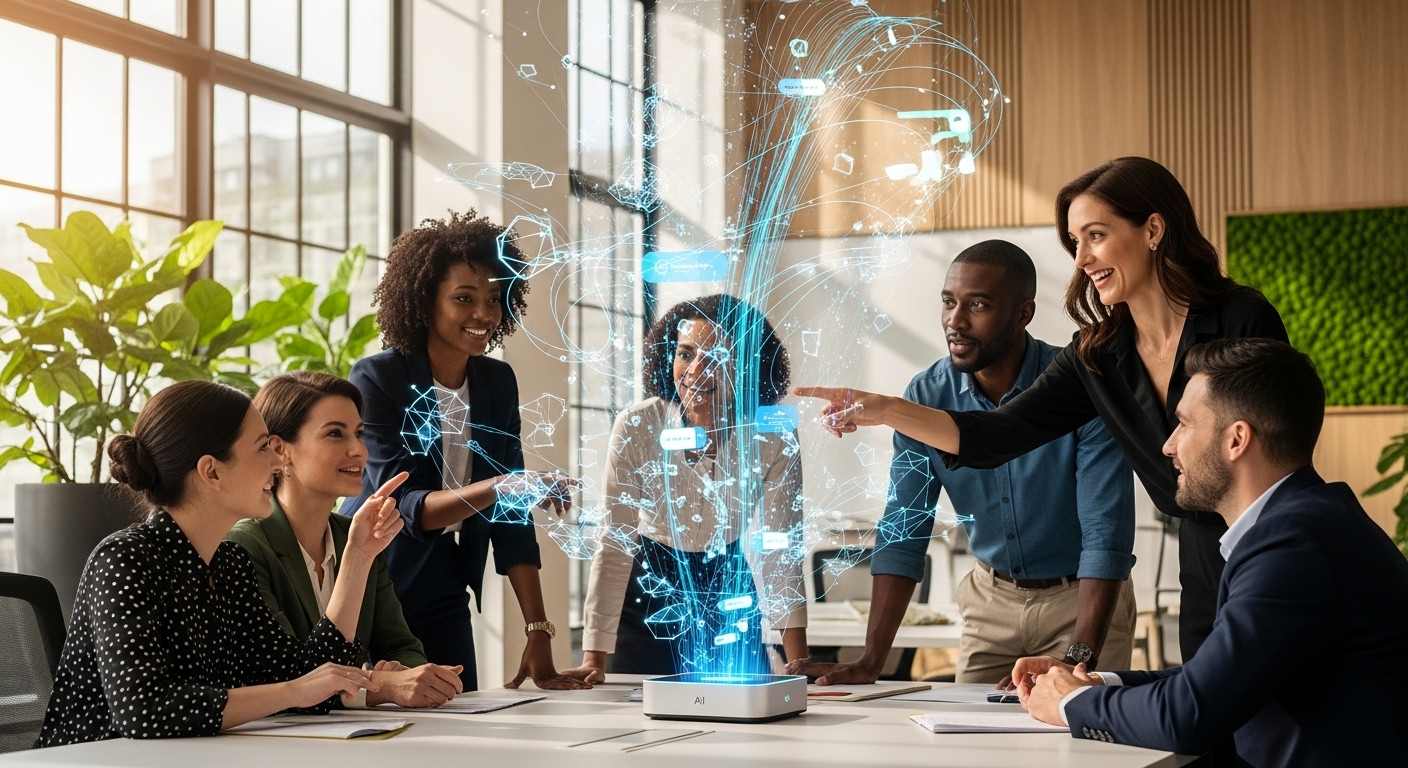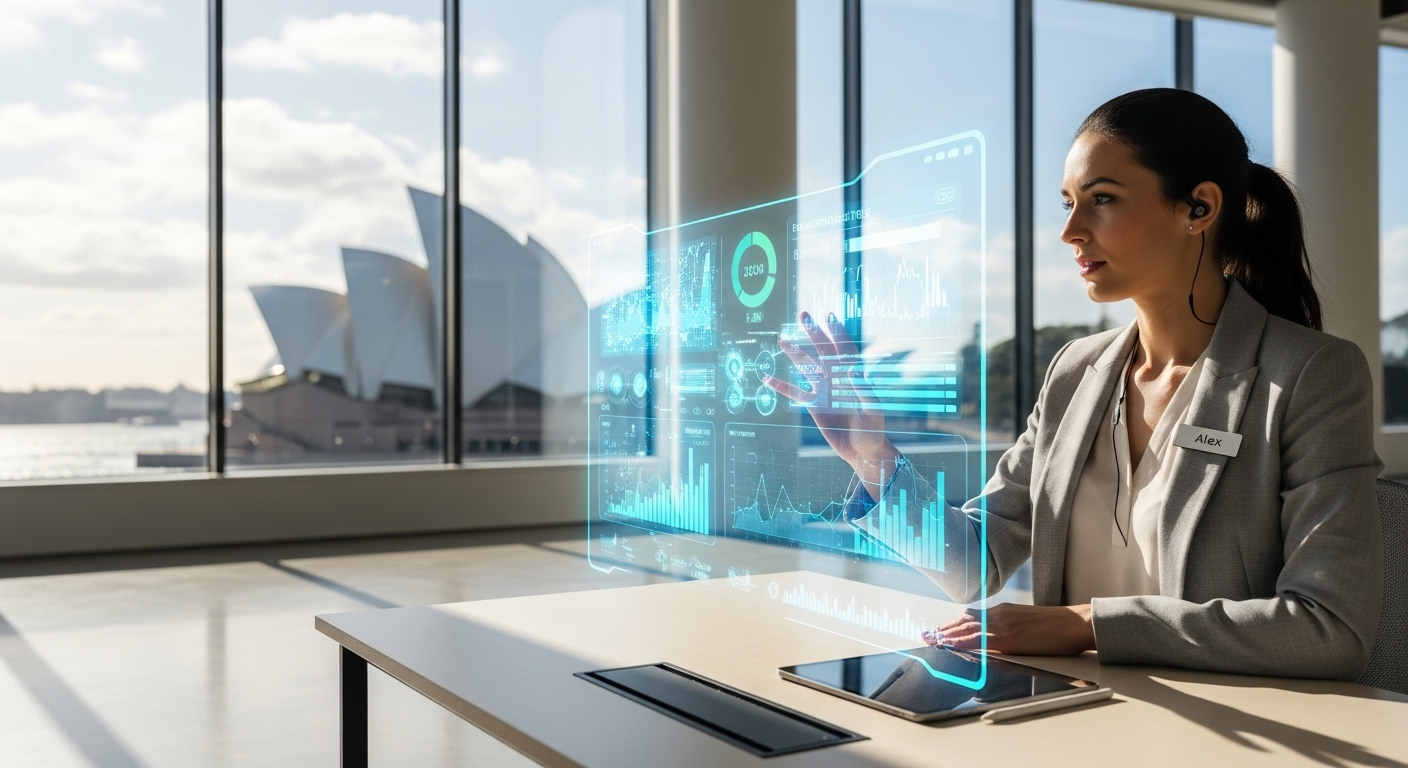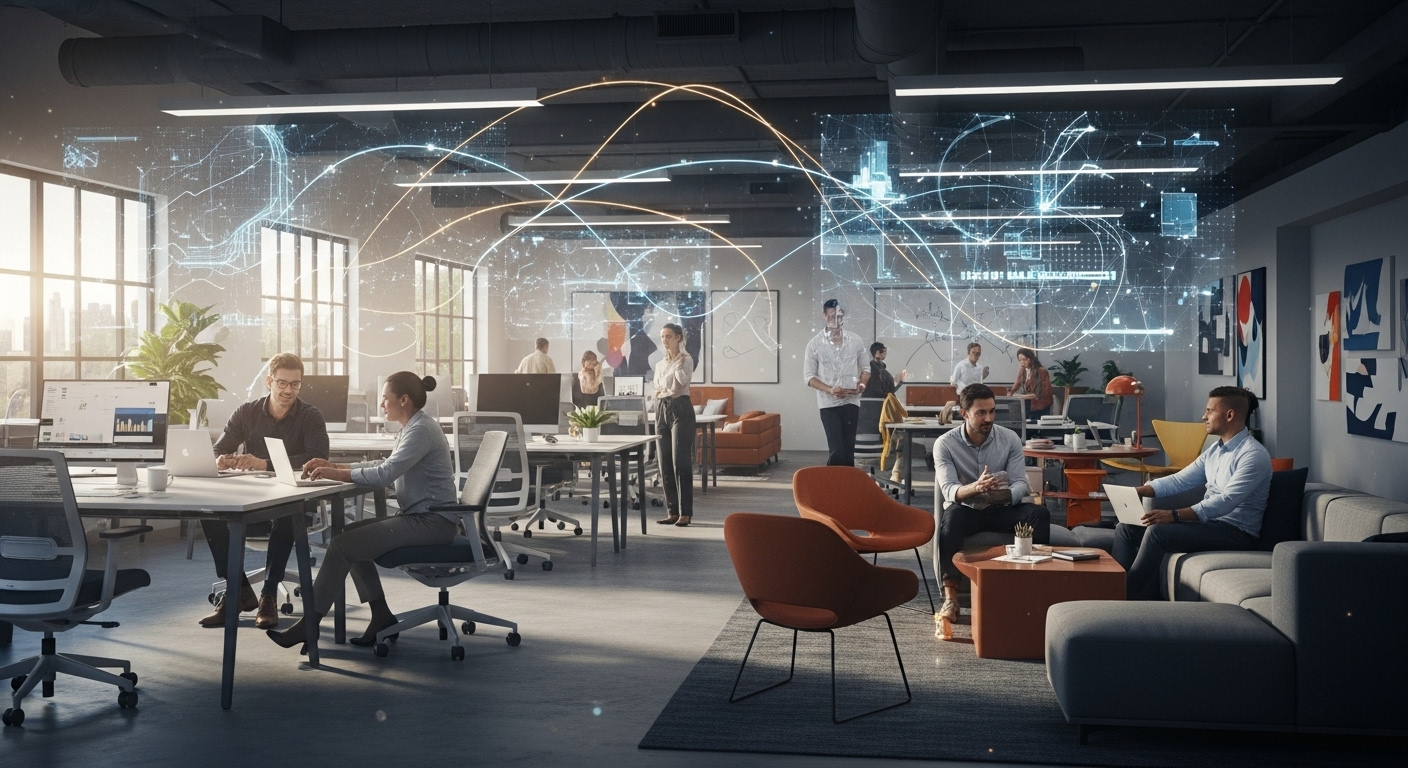In the evolving narrative of the future of work, a central tension has emerged: is the rise of artificial intelligence a threat to human ingenuity or its greatest catalyst? Many leaders view this as a binary choice, investing heavily in technology while fearing the obsolescence of their workforce, or conversely, clinging to traditional models out of skepticism. However, the most forward-thinking organizations are transcending this dilemma. They are practicing a new kind of ‘Innovation Alchemy’—the strategic and symbiotic blending of deeply human-centric culture with the powerful, data-driven insights of AI. This isn’t about automation for automation’s sake; it’s about augmentation. It’s about creating a workplace where technology handles the computational heavy lifting, freeing human talent to do what it does best: empathize, create, and connect. In this post, we’ll deconstruct this alchemical process. We will explore how to build a foundation of psychological safety in the AI era, leverage AI to translate raw data into foresight, personalize employee development, augment the creative process, and ultimately measure the profound impact of this powerful synergy.
The Crucible of Culture: Forging Psychological Safety in the AI Era
Before a single algorithm is deployed, the groundwork for true innovation must be laid in the soil of company culture. In an age where headlines constantly speculate about AI replacing jobs, the natural human response is fear and defensiveness. This state is the antithesis of innovation. To counteract this, leaders must intentionally forge a crucible of psychological safety where employees view AI not as a competitor, but as a co-pilot. This begins with radical transparency. Leadership must openly communicate the strategy behind AI adoption, clarifying which tasks will be augmented and how employees will be supported through the transition. It’s crucial to frame AI as a tool to eliminate tedious work and unlock higher-value contributions, rather than as a cost-cutting measure. Furthermore, the organization must celebrate ‘intelligent failures.’ When teams experiment with new AI tools and the results aren’t perfect, these moments should be treated as valuable learning opportunities, not punishable offenses. When an employee feels safe enough to say, ‘The AI-generated report seems to have missed this critical context,’ they are providing invaluable human oversight. This culture of safety ensures that the implementation of technology is guided by human wisdom, preventing the blind adoption of flawed automated processes and encouraging a proactive, collaborative approach to problem-solving. Without this foundation, the most sophisticated technology will fail to inspire the very creativity it’s meant to unleash.
AI as the Oracle: Translating Raw Data into Strategic Foresight
Once a culture of trust is established, AI can be unleashed as a powerful engine for insight. Modern organizations are swimming in data—from sales figures and operational metrics to employee engagement surveys and customer feedback. Manually analyzing this deluge of information is impossible. This is where AI excels, acting as a modern-day oracle that can perceive patterns and correlations far beyond human capacity. For example, predictive analytics models can forecast potential supply chain disruptions by analyzing global news, weather patterns, and shipping data, allowing teams to react proactively. Internally, AI-powered tools can perform sentiment analysis on anonymized communications from platforms like Slack or Teams, providing a real-time pulse on employee morale and identifying burnout risks before they escalate. Crucially, the role of AI is to present these data-driven insights, not to dictate strategy. The ‘oracle’ provides the riddles and the revelations; it is up to the human leaders to interpret their meaning. AI can tell you *what* is happening—for instance, that a certain product feature has low engagement—but it requires human intuition and market knowledge to understand *why* and to brainstorm a creative solution. This partnership turns reactive decision-making into strategic foresight, allowing organizations to anticipate market shifts, address internal challenges, and innovate from a position of knowledge rather than speculation.
The Personalized Pathway: Using AI to Architect Employee Growth
In a rapidly changing technological landscape, the concept of a static skill set is obsolete. Continuous learning is no longer a perk but a necessity for survival and growth. However, traditional, one-size-fits-all corporate training programs are inefficient and often fail to engage employees. Here, AI provides a transformative solution by enabling hyper-personalized development pathways. Imagine an AI-powered learning management system (LMS) that assesses an individual’s current skills through project performance and self-assessments. It then cross-references this data with their stated career aspirations and the company’s projected future skill needs. Based on this three-pronged analysis, the system architects a unique learning journey for each employee, recommending specific courses, mentorship opportunities, and stretch projects. This approach demonstrates a profound investment in the individual, shifting the narrative from ‘You need to learn this’ to ‘We want to help you grow in a way that aligns with your goals and our future.’ This AI-driven personalization makes upskilling and reskilling more efficient and vastly more meaningful. It fosters a culture of internal mobility and adaptability, ensuring that as technology automates certain tasks, the workforce is simultaneously evolving to take on new, more complex, and more creative roles. This proactive approach to talent development is a cornerstone of a resilient and innovative organization.
The Augmented Ideator: Supercharging Creativity with Generative AI
A common misconception is that creativity is a purely human domain that AI will inevitably corrupt or diminish. The reality is far more exciting. Generative AI tools are emerging as powerful catalysts for human creativity, acting as tireless brainstorming partners and rapid prototypers. This process is best described as augmented ideation. Consider a marketing team tasked with launching a new product. Instead of spending hours in a room trying to brainstorm a single tagline, they can prompt a generative AI with the product’s core attributes and target audience, receiving hundreds of potential slogans, ad copy variations, and campaign concepts in seconds. This doesn’t replace the human creative director; it empowers them. Their role shifts from generating the raw material to the higher-level tasks of curating, refining, and selecting the ideas that have the most strategic and emotional resonance. Similarly, product designers can use AI to generate dozens of visual concepts based on a simple sketch, and engineers can use it to simulate the performance of a new part under various conditions. In each case, the AI handles the divergent, generative phase of creativity, freeing up human innovators to focus on the convergent, strategic, and implementation phases. This massively accelerates the innovation cycle and breaks through creative blocks, leading to more diverse and daring ideas.
Human-in-the-Loop: Designing Ethical and Effective AI Workflows
The successful integration of AI into the workplace hinges on a critical principle: the ‘human-in-the-loop’ (HITL) model. This framework ensures that while AI can automate and analyze, final authority for critical decisions rests with a human. Implementing HITL is not just a best practice; it’s an ethical imperative that builds trust and mitigates risk. For instance, an AI might be used to screen job applications and recommend candidates, but a human recruiter must conduct interviews and make the final hiring decision. This prevents algorithmic bias, which can perpetuate historical inequalities in hiring, from going unchecked. In a customer service context, an AI chatbot can handle routine inquiries, but it must have a seamless and immediate escalation path to a human agent when a customer’s issue becomes complex or emotionally charged. Designing these workflows requires careful thought. It involves identifying key decision points where human judgment, empathy, or ethical consideration is irreplaceable. It also demands the creation of diverse and cross-functional teams to audit AI systems for bias and ensure their outputs are fair, transparent, and explainable. By consciously designing workflows that combine the speed of machines with the wisdom of people, organizations create systems that are not only more effective but also more equitable and trustworthy, strengthening the entire socio-technical fabric of the company.
Measuring the Alchemy: Beyond ROI to a Holistic Innovation Scorecard
The profound impact of blending human-centric culture with AI cannot be captured by traditional financial metrics alone. A positive return on investment (ROI) for a new AI tool is important, but it tells only a fraction of the story. To truly understand the value of this ‘innovation alchemy,’ leaders must adopt a more holistic measurement framework—an ‘Innovation Scorecard.’ This scorecard moves beyond lagging financial indicators to capture the leading indicators of a healthy innovation ecosystem. Key metrics could include: ‘Time to Insight,’ measuring how quickly AI-driven analysis leads to actionable business intelligence; ‘Rate of Experimentation,’ tracking the number of new ideas tested by teams; and ‘Employee Sentiment Toward Technology,’ gauged through regular pulse surveys to ensure AI is perceived as an enabler, not a threat. Other vital signs to monitor are improvements in employee engagement scores, reductions in time spent on mundane administrative tasks, and increases in internal mobility as employees are upskilled into new roles. By tracking these diverse metrics, leaders gain a multi-dimensional view of their organization’s health. They can see not just whether they are becoming more profitable, but whether they are becoming more agile, more creative, more resilient, and a better place for humans to work. This comprehensive approach to measurement validates the investment in both people and technology, creating a virtuous cycle of continuous improvement.
Conclusion
The future of workplace innovation is not a sterile, automated landscape run by emotionless algorithms. Nor is it a nostalgic retreat to purely analog methods. The future belongs to the alchemists—the leaders and organizations who master the art of blending the very best of human and machine intelligence. This synthesis begins not with code, but with culture. By establishing a foundation of psychological safety, companies empower their people to embrace technology as a partner rather than a threat. From this trusted foundation, AI can be deployed to serve human ends: translating seas of data into strategic foresight, architecting personalized pathways for employee growth, and acting as a tireless co-creator in the innovation process. This partnership must be governed by ethical, human-in-the-loop design and measured with a holistic scorecard that values engagement and agility as much as it values efficiency. Companies that pursue this symbiotic model will unlock unprecedented levels of creativity and resilience. They will not only navigate the disruptions ahead but will actively shape a future of work that is more productive, more adaptive, and, most importantly, more profoundly human. The alchemy is complex, but the formula is clear: combine our irreplaceable ingenuity with technology’s incredible power, and transform the very nature of work itself.





